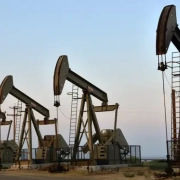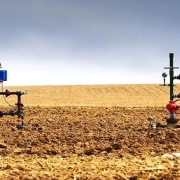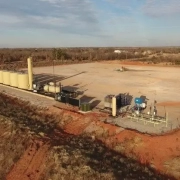Community-Owned Mineral Rights: Pros and Cons
In many parts of the world, people consider mineral resources a valuable asset and a key driver of economic development. However, the ownership and management of these resources can be complex, especially when communities get involved. Community-owned mineral rights refer to situations where a group of individuals or an entire community holds mineral resources, rather than private corporations or the government.
This model has gained increasing attention as an alternative to traditional ownership structures, promising potential benefits for local communities and stakeholders.
In this article, we will explore the concept of community-owned mineral rights, discussing both the advantages and disadvantages of this ownership model. By examining the pros and cons, we will provide a deeper understanding of how this system works and how it could impact the future of resource management.
Understanding Community-Owned Mineral Rights
Before delving into the pros and cons, it’s essential to understand what community-owned mineral rights entail. In traditional mineral rights arrangements, ownership is typically either held by individuals. Moreover by private companies, or governments. These entities have the legal right to extract minerals such as oil, natural gas, coal, and metals from beneath the earth’s surface.
In contrast, community-owned mineral rights involve the collective ownership of mineral resources by a specific community or group of people. This could include indigenous communities, local municipalities, cooperatives, or any other collective organization that seeks to control and manage its mineral assets. Communities may share ownership of the land or mineral resources equally or according to specific agreements. Communities that hold mineral rights are entitled to receive the revenue generated by the extraction of these resources. They can receive this revenue through royalty payments, lease agreements, or other financial arrangements that they share among their members. They can then use the funds for a variety of purposes, including infrastructure development, education, health care, and community projects.
While the idea of community-owned mineral rights sounds appealing in theory, it is important to consider both the potential advantages and challenges of such a system.
The Advantages of Community-Owned Mineral Rights
Economic Benefits for Local Communities
One of the most significant advantages of community-owned mineral rights is the potential for economic growth and development within the community. By controlling the rights to extract and sell mineral resources, the community can generate substantial revenue. This revenue can provide much-needed funding for local infrastructure projects, public services, and other community development initiatives.
For example, communities may use the proceeds to build schools, hospitals, roads, or public transportation systems, thereby improving the quality of life for residents. The community could also use the funds to support local businesses, create jobs, and foster economic self-sufficiency.
Additionally, communities can control how their resources are used through community-owned mineral rights, ensuring that they conduct the extraction and development of minerals in a way that benefits the people rather than external corporate interests. This can help prevent exploitation and promote sustainable practices.
Social and Cultural Empowerment
Community ownership of mineral rights can empower communities, particularly indigenous and marginalized groups, to have more control over their land and resources. For many indigenous communities, mineral rights are closely tied to their cultural identity and traditional ways of life. Being able to control and manage mineral resources can help ensure that the community’s cultural heritage is respected, and that the benefits derived from these resources remain within the community.
By having a say in the decision-making process regarding the extraction and management of minerals, community members can take ownership of their future and ensure that their voices are heard. This empowerment can foster a sense of pride and self-determination, contributing to the community’s social cohesion.
Furthermore, the financial gains from community-owned mineral rights can support cultural and educational initiatives that help preserve traditional knowledge and practices. For instance, communities can invest in programs that teach younger generations about their cultural heritage and provide resources for community-based art, music, and language projects.
Environmental Stewardship and Sustainability
Communities that own mineral rights often have a greater incentive to manage their resources in an environmentally sustainable way. Unlike private corporations that may prioritize short-term profits, community-owned initiatives may be more inclined to consider long-term ecological impacts. When communities control their mineral resources, they can implement measures to ensure that extraction methods are sustainable, reduce environmental degradation, and protect the surrounding ecosystem.
Additionally, communities can implement stricter environmental regulations that align with their values, taking into account local biodiversity, water resources, and land preservation. This approach can contribute to more responsible mining practices and reduce the risk of harmful environmental consequences, such as pollution, habitat destruction, and climate change.
Moreover, community ownership may allow for greater collaboration with environmental organizations, scientists, and governments to develop effective strategies for resource management. By prioritizing environmental stewardship, communities can create a more sustainable model of resource extraction.
Strengthening Local Governance
Community-owned mineral rights can also strengthen local governance by encouraging democratic decision-making processes.
In traditional mineral rights systems, external parties, such as large corporations or distant governments, often make decisions regarding extraction and land use. In contrast, when a community owns mineral rights, the people directly manage the resources.
This model encourages transparency, accountability, and participation, which are essential elements of good governance. Community members are more likely to engage in discussions and decision-making processes that affect their lives, fostering a sense of civic responsibility and involvement. This participatory approach can lead to more inclusive and effective policies that reflect the needs and values of the community.
The Challenges of Community-Owned Mineral Rights
While the benefits of community-owned mineral rights are clear, this model also presents significant challenges. It is essential to understand these potential downsides in order to evaluate whether this system is sustainable in the long term.
Financial and Management Complexities
One of the main challenges of community-owned mineral rights is the complexity of managing and overseeing mineral extraction operations. Mineral resource management requires technical expertise, financial acumen, and a thorough understanding of the industry. Many communities may lack the necessary resources or knowledge to effectively manage such operations.
This can lead to inefficiencies, mismanagement, or even financial losses. Without the right expertise, communities may struggle to negotiate favorable contracts with extraction companies, protect their interests, or reinvest profits in a way that benefits all members.
Professional management may be required. This often incurs costs that can potentially erode the community’s share of the revenue.
Moreover, the a lack of financial infrastructure and systems to support such large-scale operations. This may hinder efforts to ensure that the revenue from mineral extraction. The community members fairly distribute it among themselves. This could lead to disputes or tensions within the community regarding how they allocate profits and who benefits most from the resources.
Risk of Exploitation or Corruption
As with any system that involves large sums of money, community-owned mineral rights are at risk of exploitation or corruption.
If not properly regulated, a small group of individuals could siphon off the wealth generated from mineral resources, leading to unequal distribution of the proceeds. The community can then use the funds for a variety of purposes, including infrastructure development, education, health care, and community projects.
This can create divisions within the community and undermine the overall goal of shared prosperity.
Additionally, external companies may attempt to exploit communities by offering unfair deals, using their lack of expertise to secure lower royalty rates or unfriendly extraction terms. Communities may also be vulnerable to the influence of corrupt local leaders who may not act in the best interests of the broader population.
To mitigate these risks, communities must implement strong governance structures, transparency, and accountability.
These mechanisms ensure that individuals manage mineral rights equitably and ethically.
Without these safeguards, there is a significant risk of undermining the benefits of community ownership.
Environmental and Social Tensions
While community ownership can promote environmental sustainability, it also carries the risk of environmental harm. In some cases, the community may prioritize immediate financial gains over environmental concerns, leading to overexploitation of resources and ecological damage. This is particularly true when communities are under economic pressure and view mineral extraction as a quick route to economic development.
Social tensions can also arise if community members disagree about how to use the funds generated from mineral extraction. Some individuals may push for more economic development, while others may prioritize preserving traditional ways of life or protecting the environment. Balancing these competing interests can be challenging, and disagreements could lead to division and conflict within the community.
Legal and Political Issues
Communities that own mineral rights may face legal and political challenges in protecting their interests.
In many countries, the state considers mineral resources its property, and national laws may not always recognize community ownership.
In some cases, communities may struggle to assert their rights against government or corporate interests, which could attempt to exploit or extract resources without the community’s consent.
Additionally, conflicts over land ownership and mineral rights can result in lengthy legal battles, which may drain the community’s resources and hinder development. These legal and political hurdles can make it difficult for communities to fully realize the benefits of their mineral rights.
Community-owned mineral rights offer both significant opportunities and substantial challenges. The potential for economic development, cultural empowerment, and environmental stewardship makes this model appealing for many communities. Communities can generate revenue to fund local projects and ensure that the benefits of resource extraction stay within the community. This is by directly controlling their mineral resources.
You must carefully consider the complexities of managing mineral rights, the risks of exploitation, and the potential for environmental harm.
To succeed, communities must develop effective governance structures, seek professional expertise, and implement transparency and accountability measures. This is to safeguard the equitable distribution of benefits.
Ultimately, whether community-owned mineral rights are a viable solution depends on the specific circumstances of each community. It requires careful planning, collaboration, and a commitment to responsible resource management to ensure that this model can bring about lasting positive change.
Do you have further questions related to Community-Owned Mineral Rights? Reach out to us here.












Leave a Reply
Want to join the discussion?Feel free to contribute!